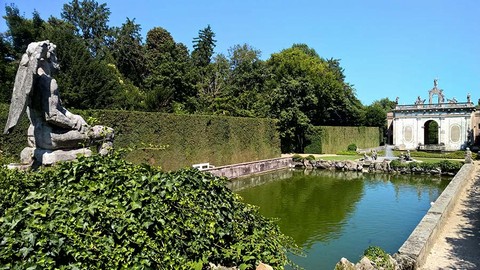
In the second half of the 1500s Palladio said that gardens were the soul of a villa.
Designed initially as a place for strolling, and then gradually a place for contemplation and literary idleness, over time the gardens became larger and more complex, adapting to the contours of the terrain, enhancing the presence of water and becoming one with the building.
In these large homes the monumental body is always prefaced by the main road lined with tall trees, a kind of emblematic landscape declaring the importance of the family.
Palladio was the first architect to consider water, a precious ornament and indispensable for sustenance, as an occasion and inspiration for the construction of fountains, nymphaeums, fish ponds. It also allowed more luxuriant vegetation.
Between the seventeenth and eighteenth century, the gardens were embellished with new elements.
There are countless statues, potted citrus plants, the cedraie, balconies of lemon and bitter orange trees, often irrigated through an elaborate system of water supplied through stone ducts of inestimable worth.
At the same time diverse vegetal architecture appears everywhere, such as espaliers, pergolas, hornbeam groves, antilogy theaters and mazes through bushes and trees, woods filled with berries, and nets with a decoy to attract birds for fowling.
Only as late as the nineteenth century would the seventeenth and eighteenth century geometries replace the natural contours of the new English-style gardens, with ponds, streams, large clearings and architecture for reverie and imagination.
Some of the finest examples of historic gardens can be visited in Villa Pisani (located in Stra) or Villa Barbaro (in Maser); if you go to Valsanzibio, near Padua, you can visit the magnificent gardens of Villa Barbarigo. And there are many more in the area.
Link: